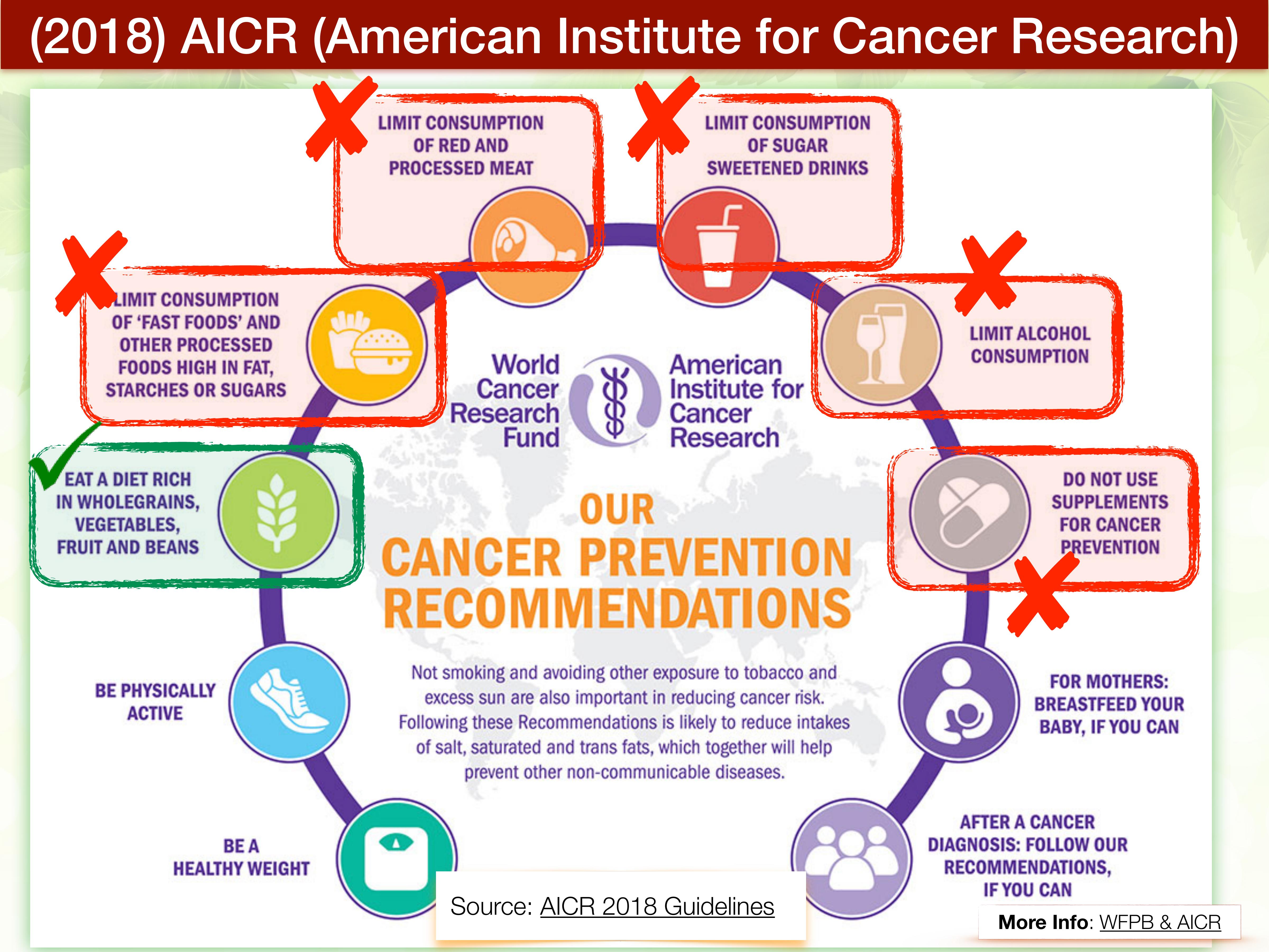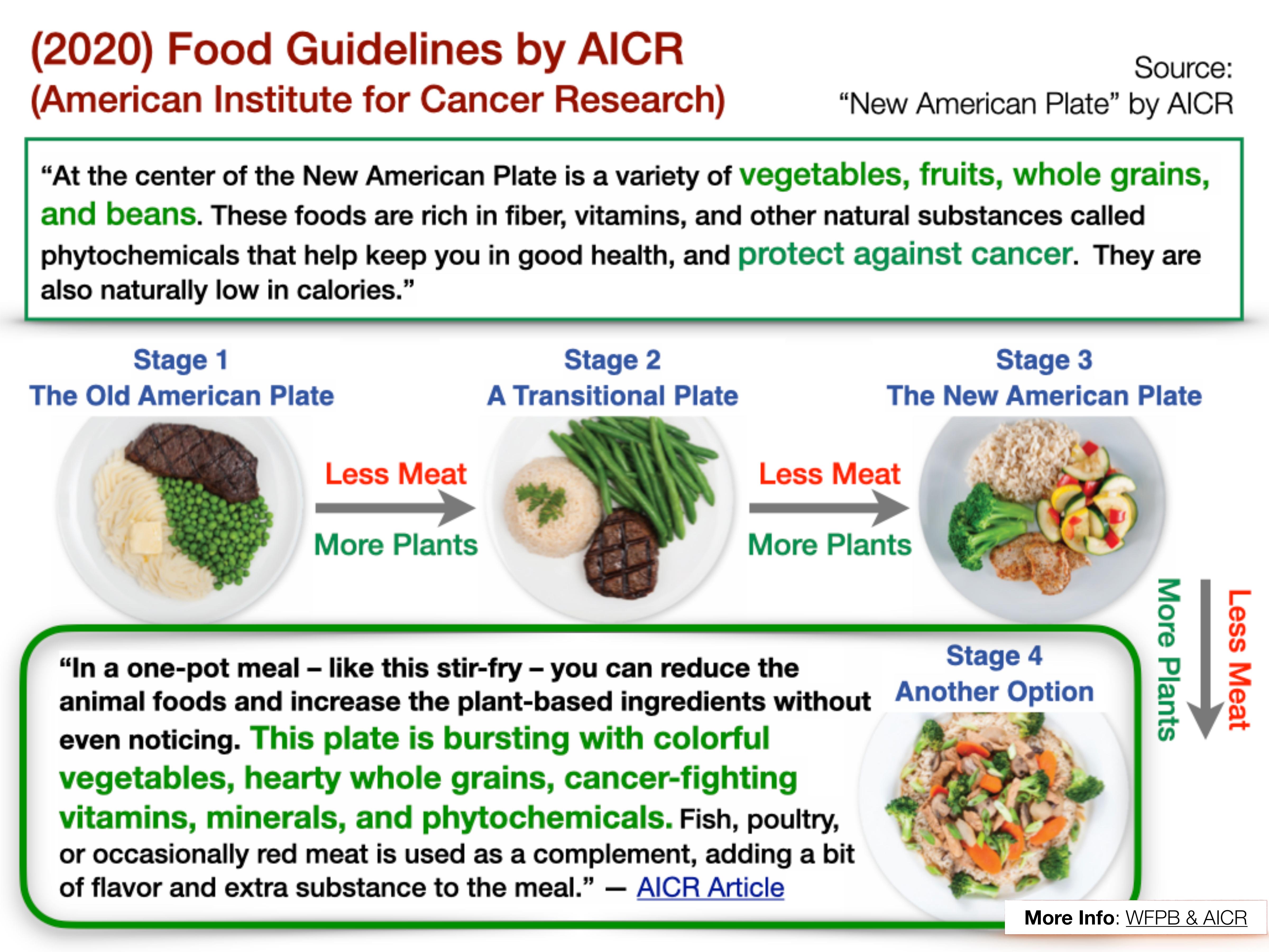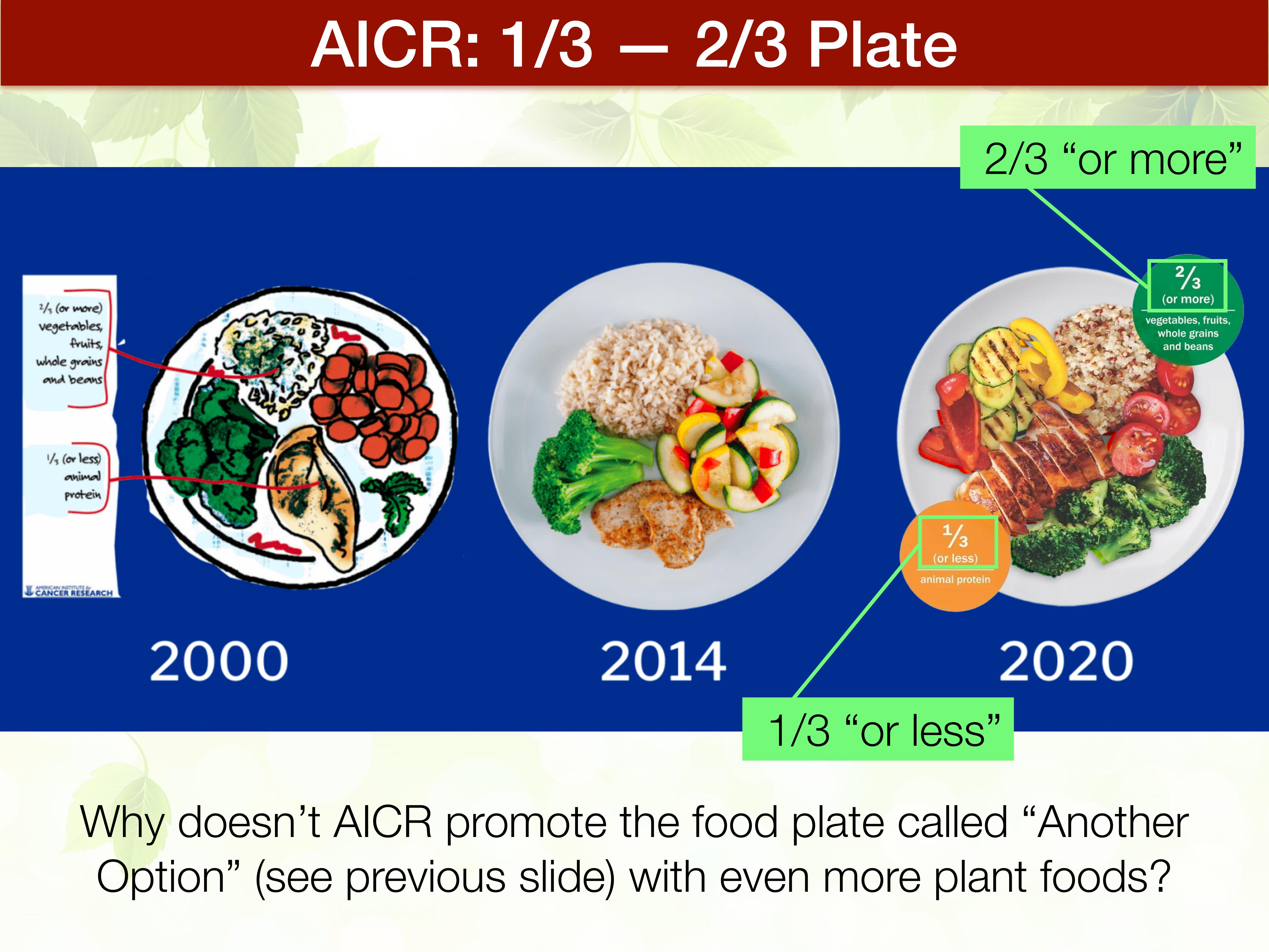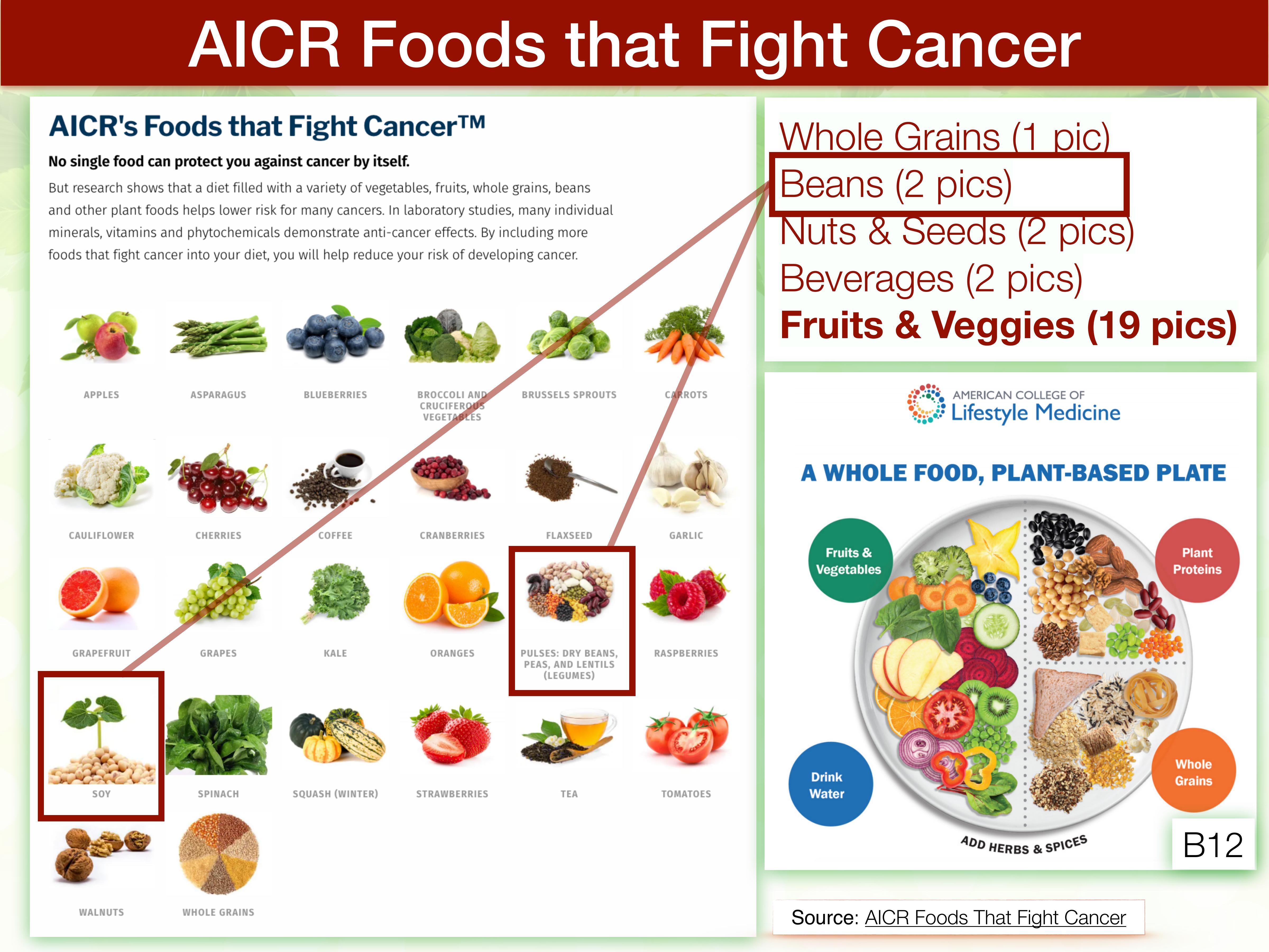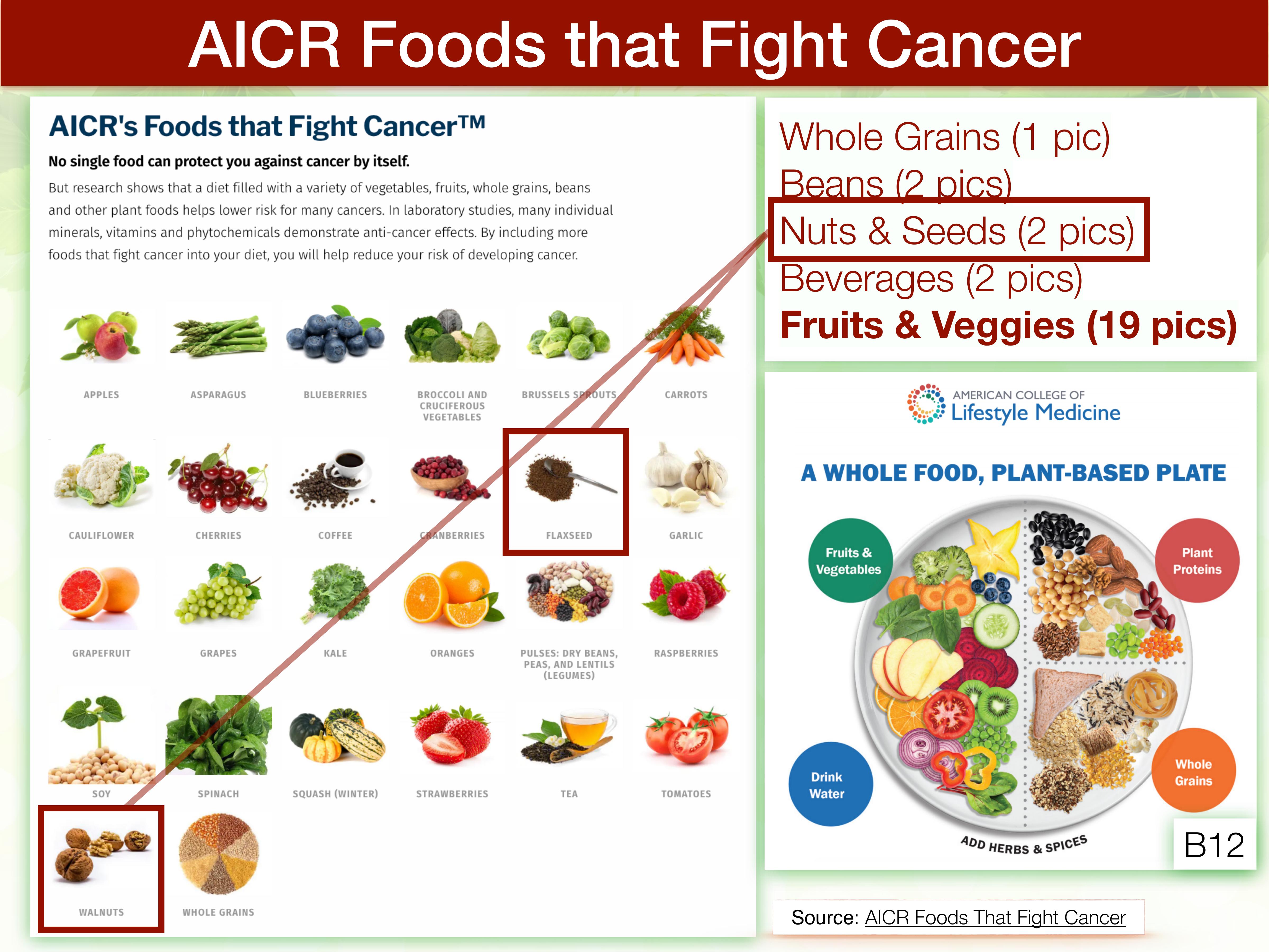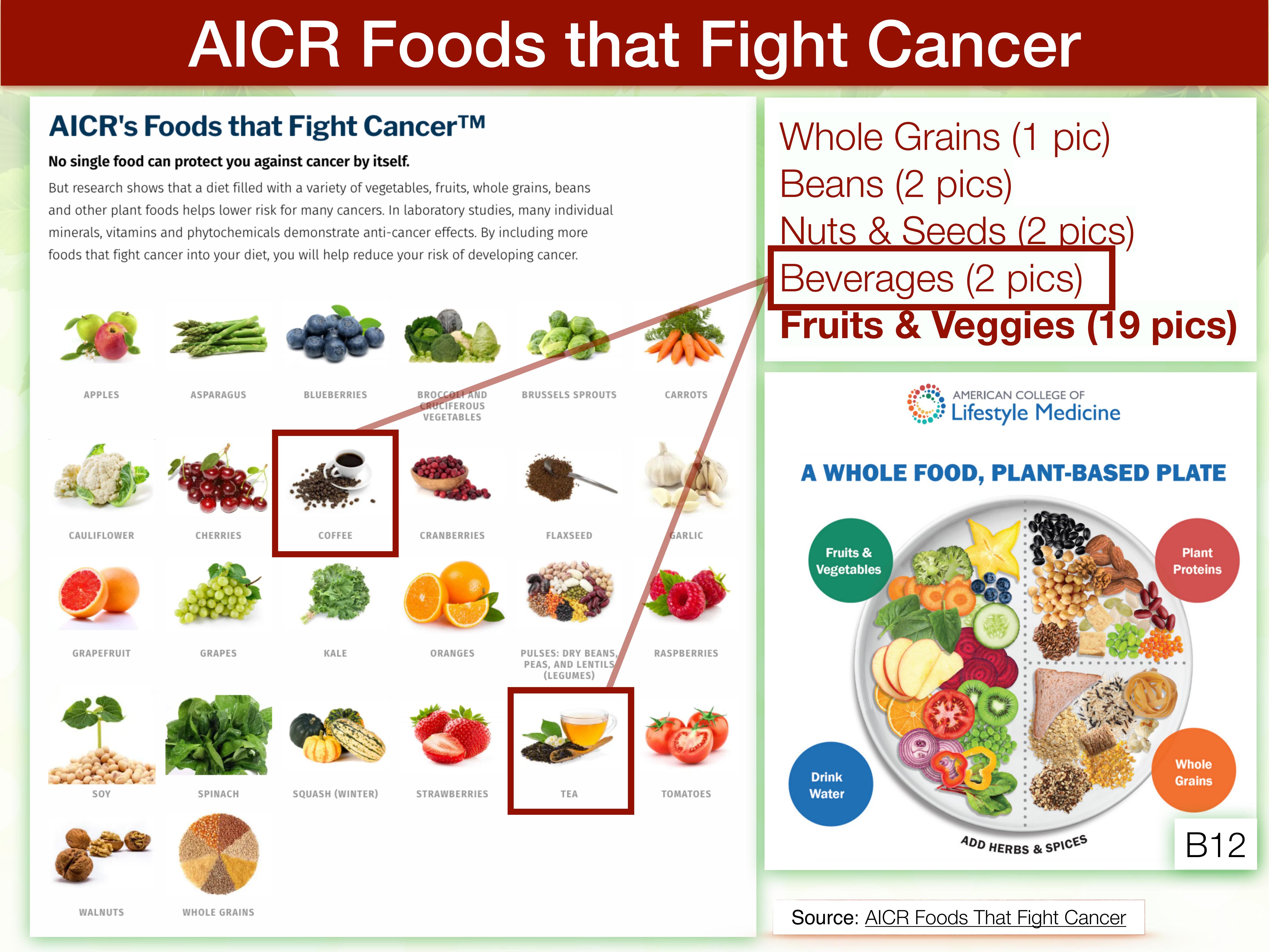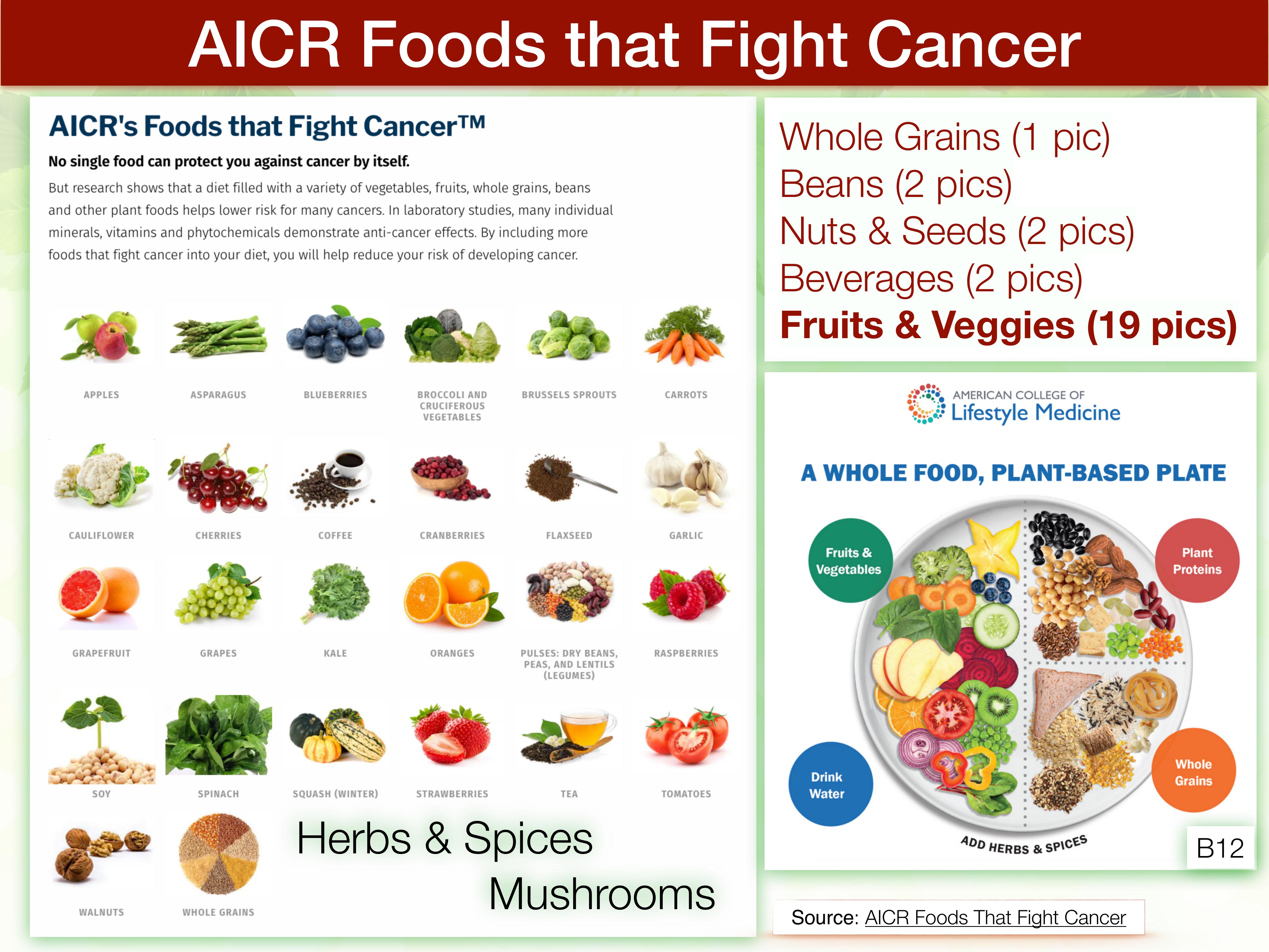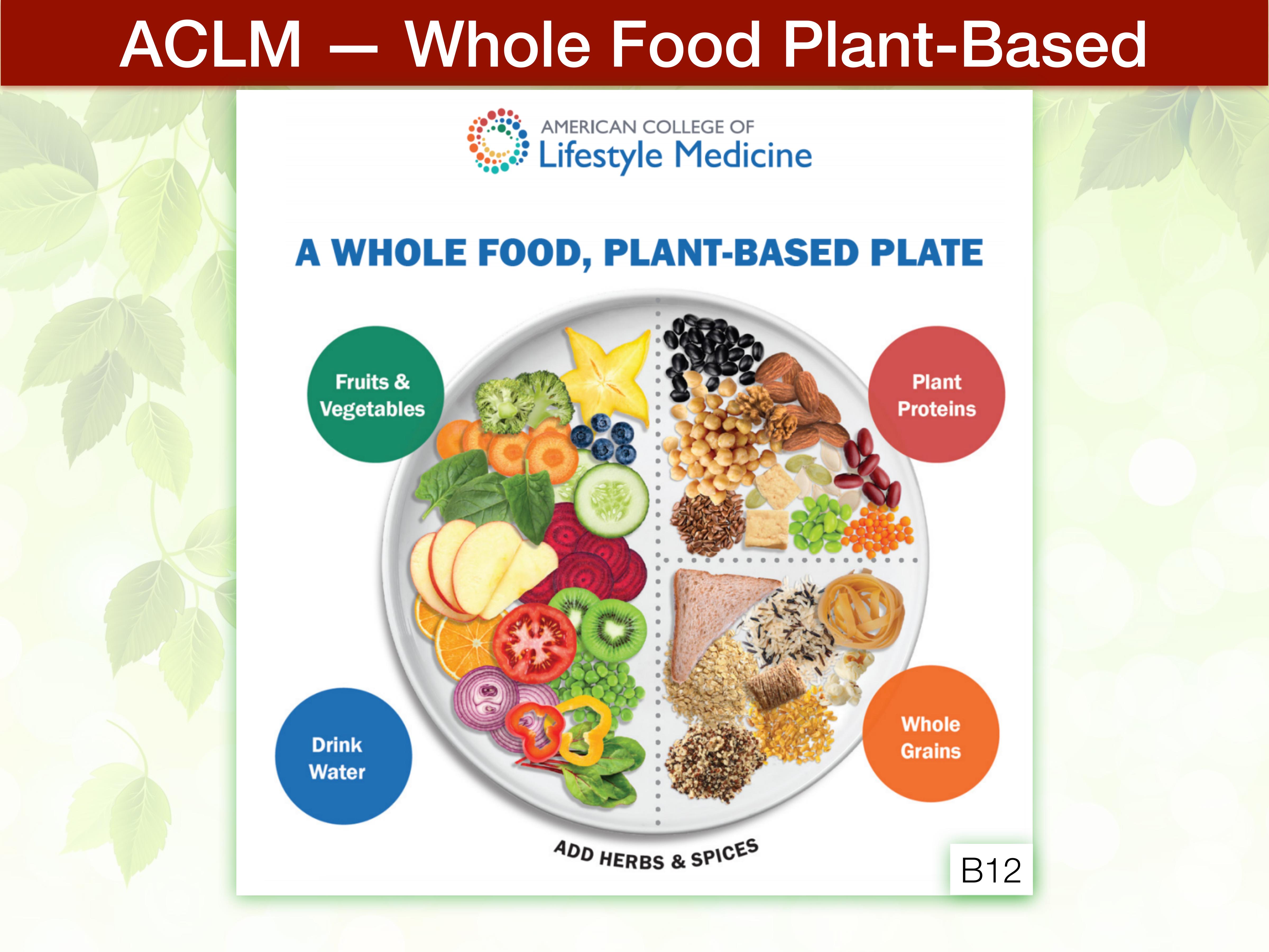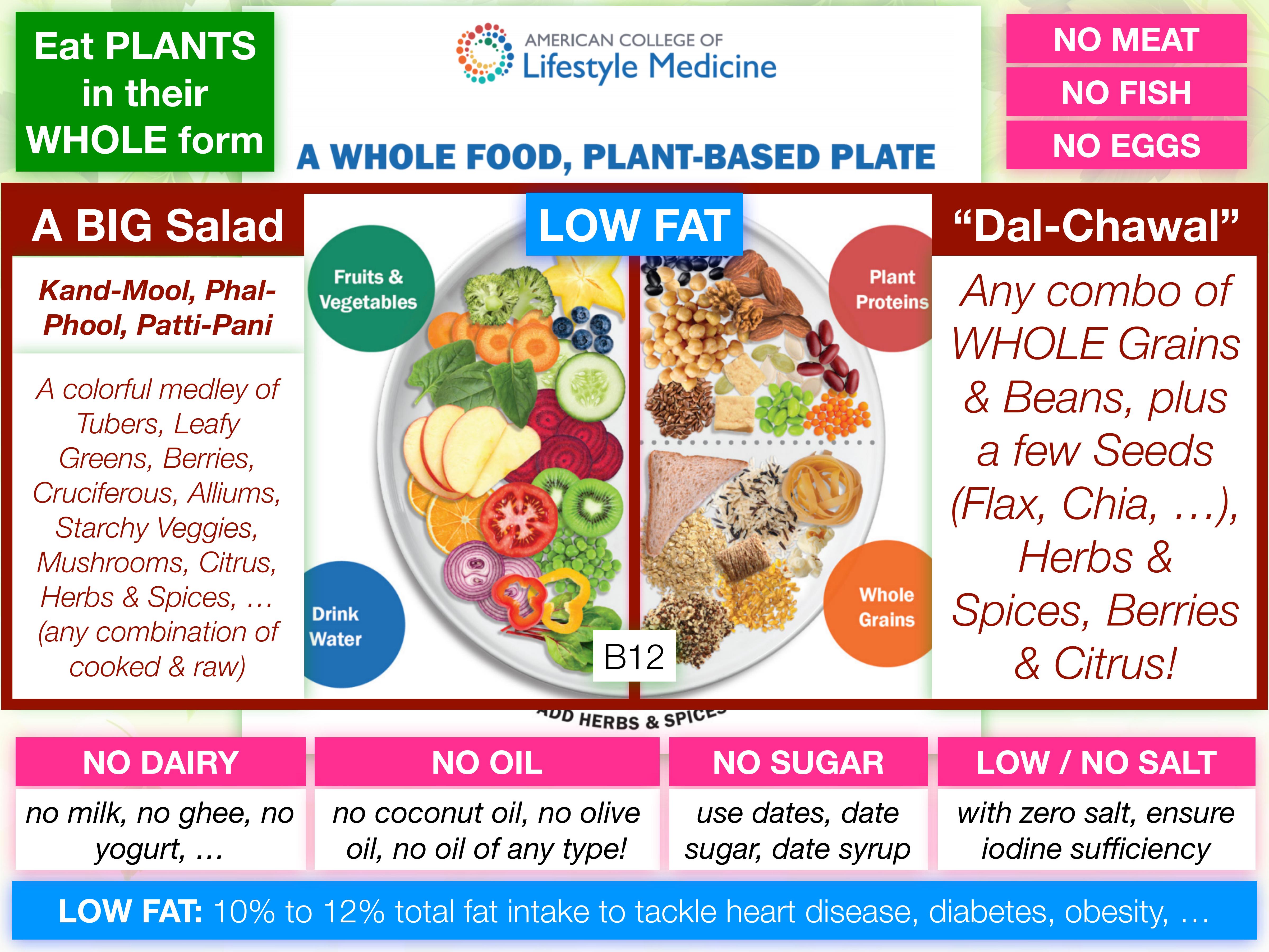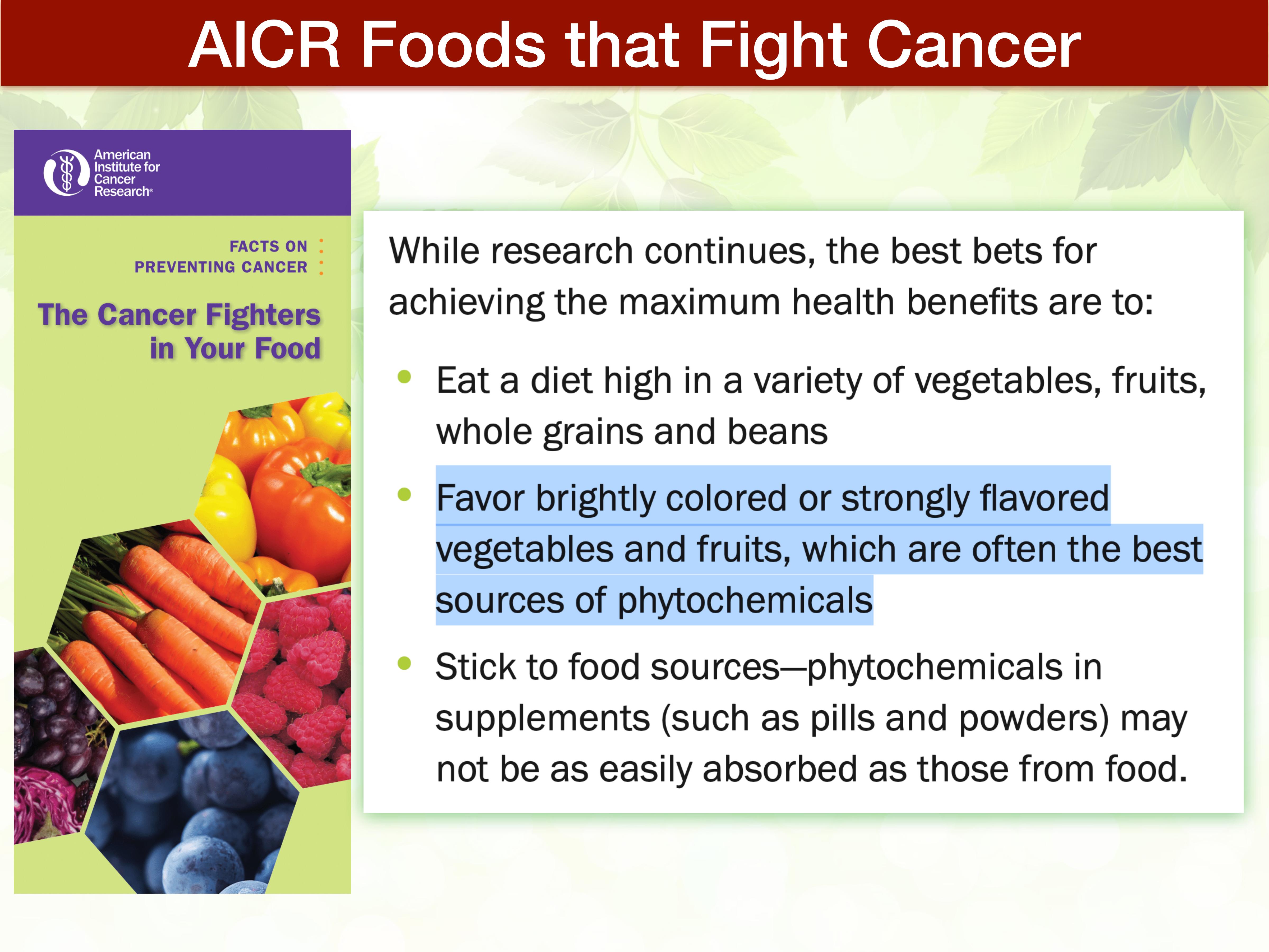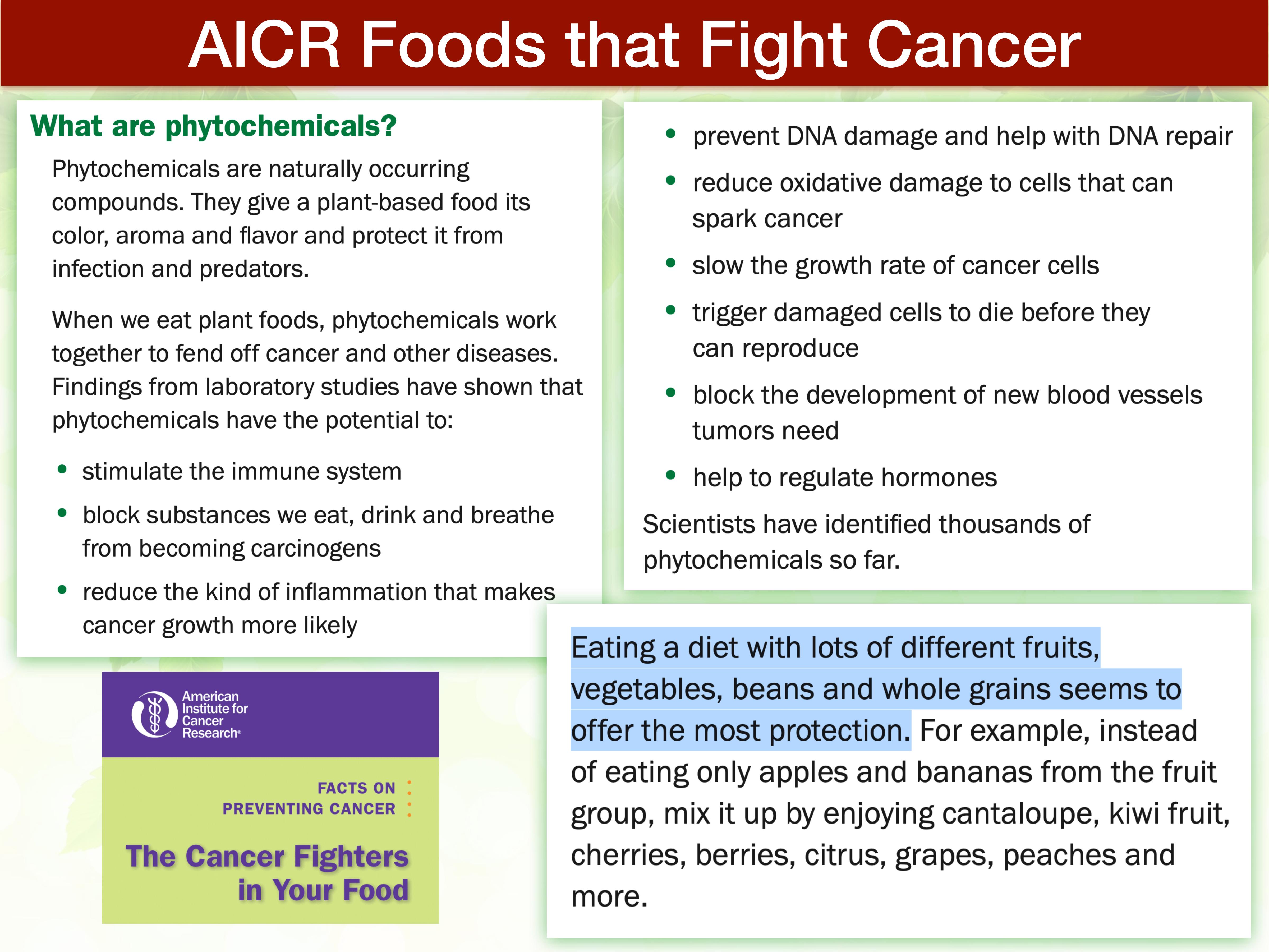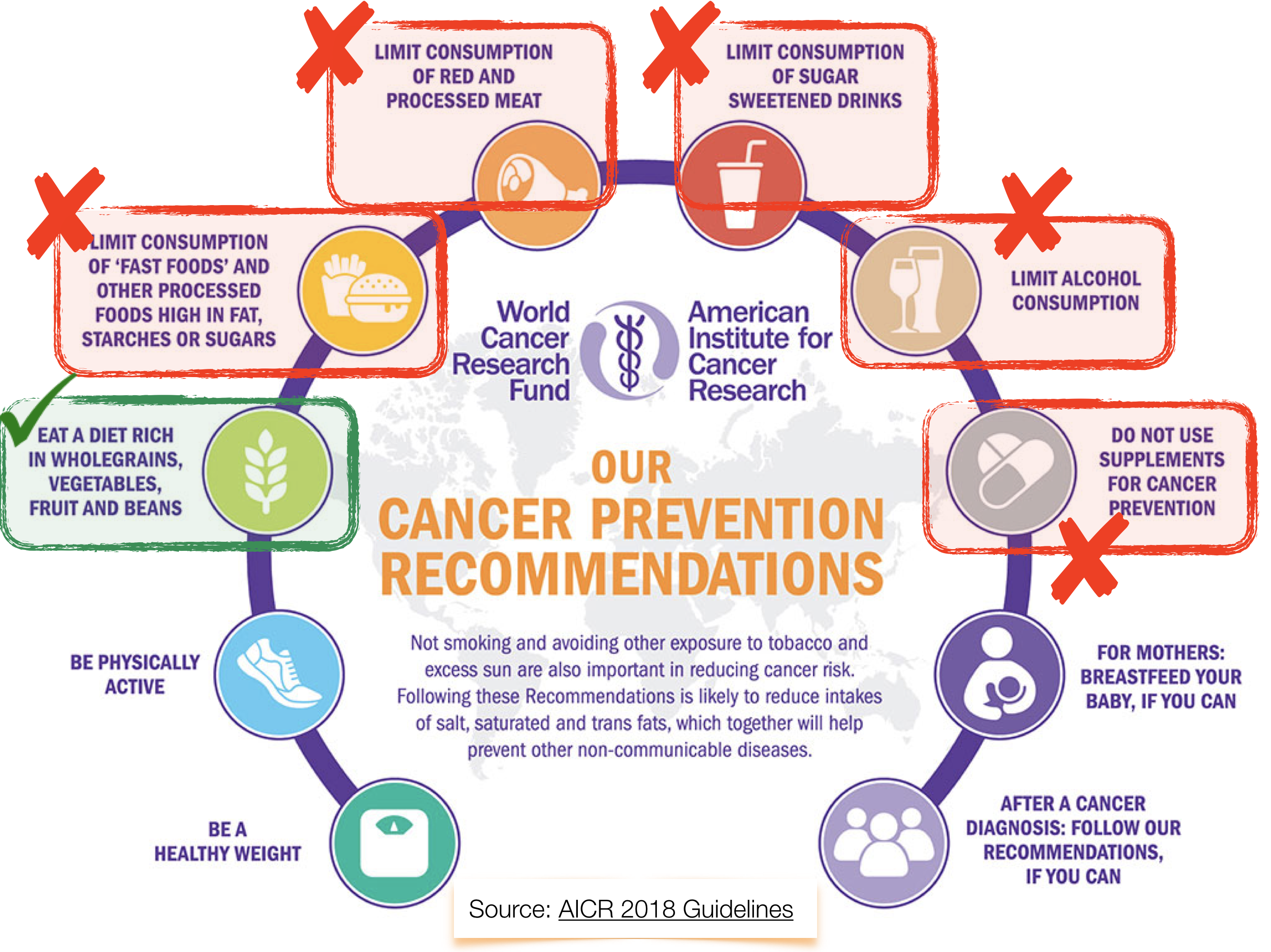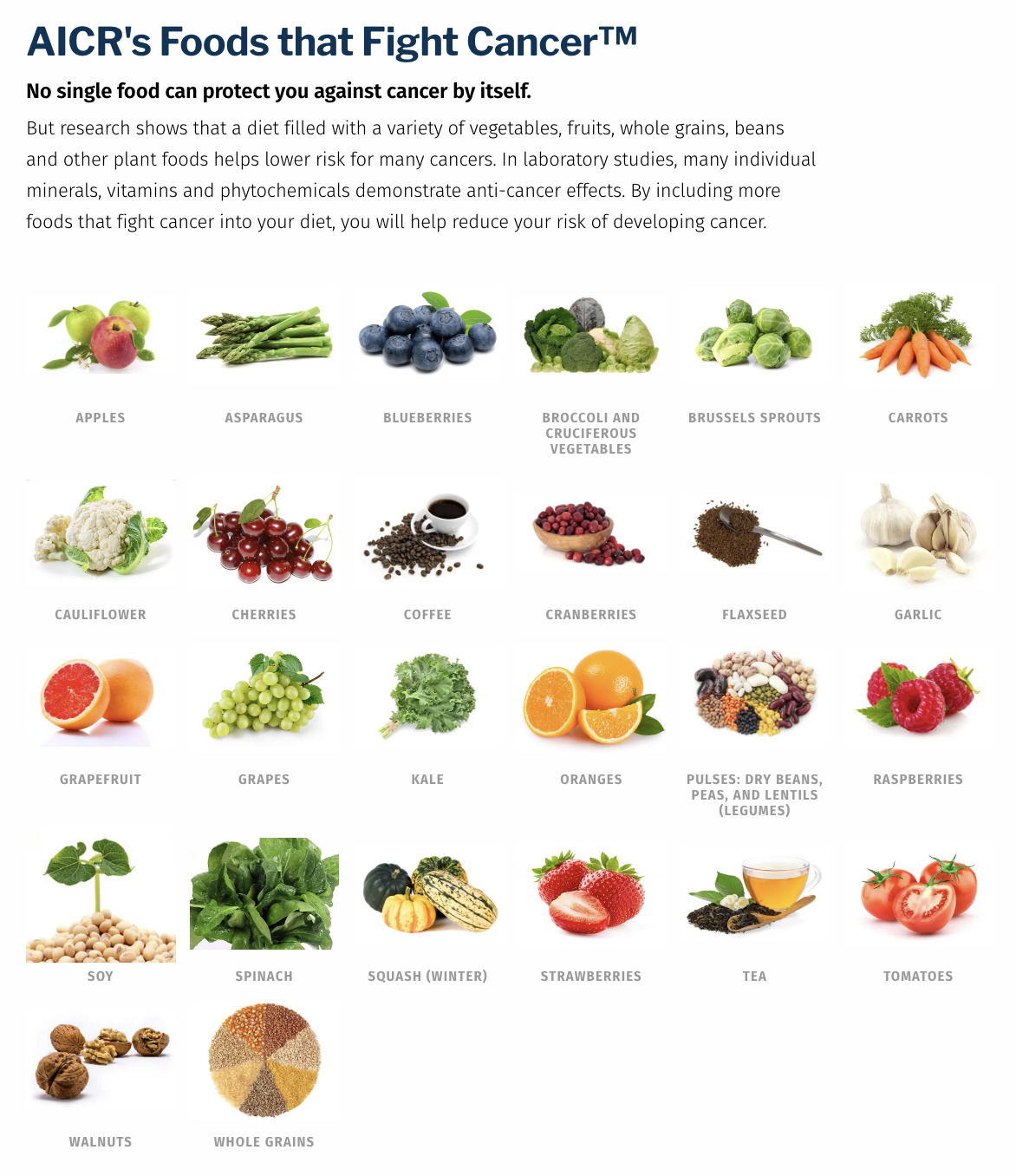What do we see? Six recommendations pertain to what we put in our mouths! Five are negative (what NOT to do); one is positive (what to do). The positive recommendation encourages us to consume a plant-based diet!
Source: AICR's 10 Recommendations are explained in detail in this 92-page document: WCRF - AICR Recommendations (2018). A summary is available here: 10 guidelines for cancer prevention.
AICR has also published New American Plate (2020) showing 4 plates.
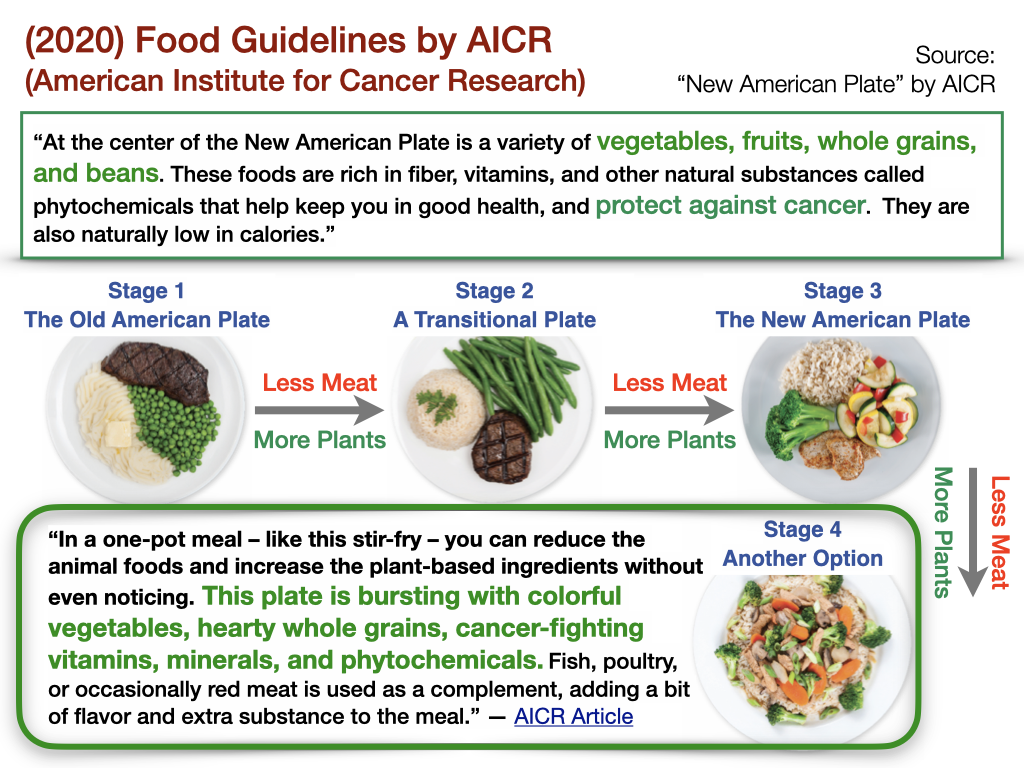
The first plate is called 'The Old American Plate' with steak, buttery mashed potatoes & peas. The third plate is 'The New American Plate'. An excerpt from the article:
The last plate is called 'Another Option'; it shows a one-pot-meal — a plant-based stir fry! For this plate, AICR says,
Interestingly, AICR has also published a list of foods that fight cancer!
What did I notice?
- Plant foods: One pic has whole grains, 2 pics have beans, 2 pics have nuts & seeds, 2 pics have beverages, and 19 pics show fruits & veggies (F&V). Do fruits & veggies have the highest concentrations of those cancer fighting vitamins, minerals & phytonutrients? [I wish they had 1 or 2 pics for top anti-inflammatory spices like turmeric, ginger, cloves & rosemary too.]
- Animal foods: Not a single pic shows any animal products like meat, fish, eggs, milk or dairy products.
- Macronutrient extracts: Not a single pic shows macronutrient extracts like sugars (carbohydrate extracts) or oils (fat extracts).
- Ultra-Processed Foods (UPFs): No pic shows ultra-processed foods.
AICR 10 Recommendations and their food plates encourage us to dial down our intake of animal products and boost our intake of plant foods. They also encourage us to reduce our intake of processed foods. Put together, they are pointing us at both directions: Plant-Based (more plants, less animal products) and Whole Foods (foods in their natural form, not processed). But what exactly is the relationship between AICR Recommendations and Whole Food Plant-Based guidelines?
See AICR: 10 Recommendations, AICR: New American Plate and How Effective Are AICR Guidelines?. Also see ACS Dietary Guidelines (ACS stands for American Cancer Society).

 Instagram
Instagram YouTube
YouTube